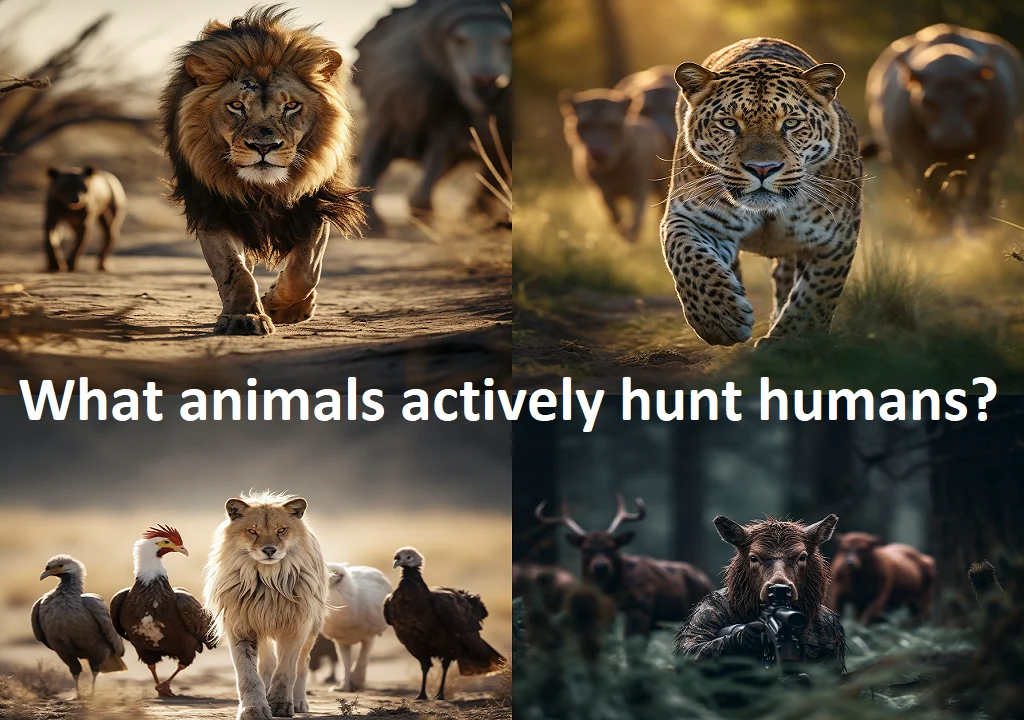
Table of Contents
Humans have a complex relationship with wildlife, often characterized by admiration, fascination, and occasional conflict. While most wildlife species do not actively hunt humans, there are instances where encounters between humans and predatory animals can lead to dangerous situations. Understanding the behavior of these animals and learning how to minimize risks is crucial for promoting safe coexistence with wildlife.
Apex predators, also known as top predators, hold the highest position in the food chain and play a vital role in maintaining ecosystem balance. These animals have adapted over generations to become highly efficient hunters. While their primary prey consists of other animals, there have been rare cases where interactions between humans and apex predators have occurred.
Certain environments, such as dense forests, open savannahs, or coastal areas, may have a higher likelihood of encounters between humans and predatory animals. Understanding the specific risks associated with these environments can help individuals take appropriate precautions and minimize potential threats.
Sharks are often portrayed as dangerous creatures, but the number of unprovoked shark attacks on humans is relatively low compared to other risks in daily life. While some species of sharks are known to be aggressive, most attacks are cases of mistaken identity, where humans are not a natural prey for sharks.
Big cats, such as lions, tigers, and leopards, are powerful and stealthy hunters. While they primarily target their natural prey, conflicts between humans and big cats can occur in areas where their habitats overlap. Encounters are rare, but it is important to respect their space and take precautions when in their presence.
Crocodiles are ancient predators that inhabit rivers, lakes, and estuaries. They are well-adapted for hunting in water and can pose a threat to humans who enter their territory. Avoiding swimming in crocodile habitats and being cautious near water bodies where they are known to reside is essential for reducing the risk of encounters.
Bears are impressive creatures found in various habitats worldwide. While they are generally elusive, certain species, such as grizzly bears and polar bears, can become aggressive if they feel threatened or encounter humans near their food sources or cubs. Understanding bear behavior, using proper food storage techniques, and following bear safety guidelines can mitigate risks.
Venomous snakes are found in many regions around the world and have evolved venom as a means of capturing prey. While snake bites on humans are relatively rare, it is important to exercise caution and be aware of venomous snakes in your area. Learning to identify venomous snakes and practicing safe hiking and camping habits can help minimize the risk of snake encounters.
Wolves are social predators known for their cooperative hunting strategies. While wolf attacks on humans are extremely rare, it is important to understand their behavior and take precautions when venturing into wolf territories. Respecting their space, keeping pets under control, and avoiding behaviors that may attract wolves can reduce the likelihood of encounters.
The best way to reduce the risk of animal attacks is to avoid encounters in the first place. This includes maintaining a safe distance from wild animals, observing them from a distance, and refraining from approaching or feeding them. It is crucial to respect wildlife and their natural habitats.
Proper food storage and waste disposal practices are essential when spending time in nature. This helps prevent attracting wildlife to human campsites, reducing the chances of negative interactions. Use bear-resistant containers, hang food from trees, or follow specific guidelines provided by local authorities to minimize attractants.
Understanding the behavior, habitat, and specific risks associated with local wildlife is key to minimizing the potential for conflicts. Research the wildlife species present in the areas you plan to visit and familiarize yourself with any specific safety recommendations or guidelines provided by wildlife agencies or local authorities.
1. Are attacks by predatory animals on humans common? Attacks by predatory animals on humans are relatively rare compared to other risks in daily life. However, it is important to be aware of potential risks and take precautions when in wildlife habitats.
2. Can humans defend themselves during an animal attack? Self-defense during an animal attack can vary depending on the situation and the species involved. It is crucial to remain calm, avoid making sudden movements, and follow recommended guidelines for the specific animal encountered.
3. Should I carry weapons for protection against wildlife? Carrying weapons for protection against wildlife is generally not recommended. Instead, focus on preventive measures such as understanding animal behavior, maintaining distance, and respecting their territory.
4. How can I report wildlife encounters or potentially dangerous situations? Contact your local wildlife agency or authorities to report wildlife encounters or potentially dangerous situations. They can provide guidance, collect information, and take appropriate action if necessary.
While instances of animals actively hunting humans are rare, it is important to be aware of potential risks and take necessary precautions when venturing into wildlife habitats. By understanding animal behavior, respecting their space, and following recommended safety guidelines, we can promote safe coexistence with wildlife. Appreciating the beauty of the animal kingdom while minimizing risks ensures a harmonious relationship between humans and the natural world.
Technology is revolutionizing the way we hunt and shoot. From GPS mapping and ballistics calculators…
Hunting during cold weather isn’t just about layering up your boots matter. When you’re sitting…
When you’re building or upgrading your AR-style rifle, one of the key decisions you’ll face…
When it comes to tactical rifle scopes, not all optics are created equal. The differences…
In today’s age of high-tech hunting, drones have transformed the way hunters scout terrain, locate…
Every hunter knows that a steady shot can make or break a hunt. Whether you’re…
This website uses cookies.